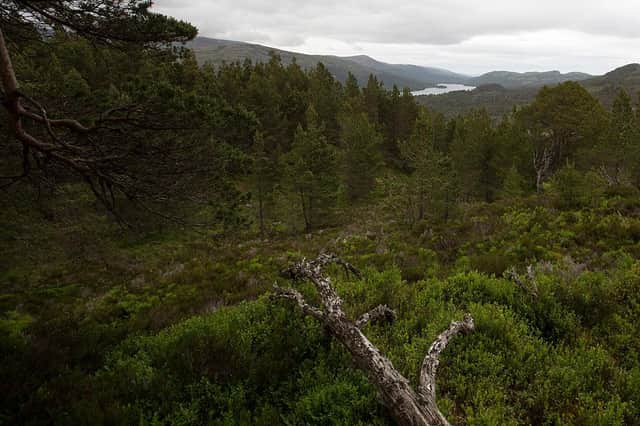Balance farming and forestry in tree planting - Andrew Arbuckle


Before you know it, parties B, C and even D are in there saying they would increase the area of land devoted to trees by xx per cent or that they would plant xxx million young saplings. This reaction is down to a belief that planting trees is a “good thing” compared with, for example, reducing deaths from drugs.
The only qualification all the politicians make is that the tree planting must be “in the right place” without defining just where this elusive location might be.
Advertisement
Hide AdAdvertisement
Hide AdWell, the election is now over, and the winners are the SNP who will try to fulfil their pledge to raise annual plantings to 18,000 hectares by the end of the lifetime of this Parliament in 2025. The most recent figures for actual planting of trees are about 12,000 hectares per year, so the new target is quite ambitious, especially when the politicians want even further forestry expansion by the end of this decade.
Without taking this Comment down a side-track, it was noticeable that when Fergus Ewing, the former Rural Affairs Minister, made the pre-election pledge, he stated his party “will” plant the additional acreage of trees.
Up until now, tree planting has been aided by both grants and taxation policies which support the sector’s long-term requirements but if the new Government intend bringing in a bit of compulsion into what has, up until now, been a voluntary action, that will be interesting. England and Wales have also pledged to increase the area they commit to forestry but Scotland, which currently plants almost 80 per cent of all new plantations in the UK, is dominant.
The enthusiasm for growing more timber was originally to reduce imports but another factor has now entered the equation. And that is getting this country towards neutrality in carbon emissions.
We are still importing significant amounts of timber. Last year, some £8.3 billion of wood products were brought into the UK. This included 7.0 million cubic metres of sawn wood, 3.7m cubic metres of wood-based panels and, ironically, 8.9m tonnes of wood pellets which help cut the UK’s usage of fossil fuel.
The road ahead for the forestry sector remains to be seen but the Government expansionist plans will no doubt reignite a division between farming and forestry in rural Scotland which has existed for decades. Oldies will recall the massive plantings that took place in the 1970s in the Flow Country, with celebrities like Terry Wogan taking advantage of taxation policies that encouraged more trees to be grown. In the Flow, the extensive but valuable peatland has had the last laugh as trees do not like soggy roots. But skelps of the Southern Uplands were planted at the same time and many a former hill sheep farm is now hidden under a canopy of trees.
In the decade from 1963 over 300,000 acres of farmland were planted; mostly with wall-to-wall conifers. For those wanting to know how many football pitches - the standard way of measuring big areas – that would be, it is easier to say it equals the area of Fife.
If the Scottish Government tree planting targets are met in the coming decade, that will see another similar area being afforested, although nowadays tree planting is more nuanced; in that there is no longer a view that tree planting means conifers only. Often a mix of species is preferred.
Advertisement
Hide AdAdvertisement
Hide AdBut there is also more focus on other aspects of land purchased for trees. This includes only planting the better land, leaving hill tops and awkward areas, and considering how the mature crops will be harvested when the time comes.
In one of his first public utterances since being elected in February, NFU Scotland Vice President Andrew Connon said the current tree planting position was “naïve at best, certainly short sighted, and having the potential to be damaging in other economic, environmental and social aspects”.
He is right. By all means let us have more trees but let us also have a little more thoughtful planning before heeling them into the ground. There is no need for farmers and foresters to be at each other’s throats.
A message from the Editor
Thank you for reading this article. We're more reliant on your support than ever as the shift in consumer habits brought about by coronavirus impacts our advertisers. If you haven't already, please consider supporting our trusted, fact-checked journalism by taking out a digital subscription.
Comments
Want to join the conversation? Please or to comment on this article.
